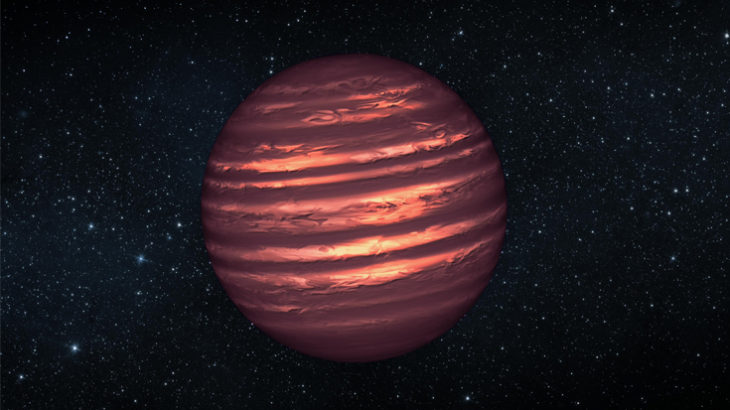HPC Adds Extra Dimension To The Search For Extraterrestrial Life

The SES consortium’s Emerald supercomputer is providing UCL astrophysicists with the computing firepower they need to help pinpoint exoplanets capable of supporting alien lifeforms.
Unarguably, it is one of the biggest scientific and philosophical questions of all: are we alone in the universe? In the quest for an answer, one of the most important developments in recent decades has been the ability to detect planets circling distant stars.
Once such an ‘exoplanet’ has been discovered – and around 2,000 have been identified so far – a key step is to establish whether its atmosphere is potentially conducive to supporting life or contains molecules that could be a tell-tale sign that life is present.
Looking for Clues
One way of characterising an exoplanet’s atmosphere is to examine its spectral characteristics:
- As light passes through an atmosphere, particular colours are absorbed depending on the chemical elements and compounds it meets.
- By analysing the spectrum of light emerging from the atmosphere, then, it is possible to calculate what the atmosphere consists of. For instance, is water – believed to be a key necessity for life to flourish – present and, if so, in what quantities and concentrations? Or are there traces of methane, perhaps indicative of biological activity?
Led by Professor Jonathan Tennyson, researchers from UCL’s Department of Physics and Astronomy are at the forefront of this work. As part of the European Research Council-funded ExoMol project, they have developed a comprehensive library of spectra which, for the first time ever, makes it possible to detect molecules at temperatures of up to 2000°C and higher.
This information can be harnessed to build computer models of atmospheres both of exoplanets and of the so-called ‘brown dwarfs’ and ‘cool stars’ that can be mistaken for exoplanets. UCL has been hard at work developing models more advanced than any previously available for studying the potential for life’s existence on far-off worlds.
Developing a Legion of Benefits
“A project like ours has enormous demands in computational terms – Emerald has made it much easier to complete this difficult and demanding work successfully.”
Dr Sergey Yurchenko, Principal Research Associate
Not surprisingly, developing a huge library of spectra and using them to model accurately the atmospheres of exoplanets tens, hundreds or perhaps thousands of light years away is a phenomenally complex undertaking.
Faced with the challenge, the team at UCL – where Professor Giovanna Tinneti’s research group is using ExoMol data to model exoplanetary atmospheres as part of the ExoLights project, in parallel with work to model cool stars’ atmospheres at Australia’s University of New South Wales – recognised the need for highperformance computing (HPC) capabilities that could integrate data from billions of ‘lines’ showing how different molecules absorb light at different wavelengths and temperatures.These calculations would require millions of Central Processing Unit (CPU) and Graphics Processing Unit (GPU) hours. The research team therefore:
- Harnessed the Emerald supercomputer – a general purpose GPU cluster unique in the UK, jointly developed as a Science and Engineering South (SES) consortium initiative. Located at Oxfordshire’s Rutherford Appleton Laboratory, which is operated by the Science and Technology Facilities Council (STFC), Emerald incorporates a total of 372 GPUs produced by NVIDIA, the US-based pioneer in visual computing.
- Used UCL Research IT Services’ Legion distributed computing cluster comprising over 7500 CPU cores and over 7000 Compute Unified Device Architecture (CUDA) cores, plus the DiRAC (Distributed Research utilising Advanced Computing) integrated supercomputing facility managed by STFC.
“The benefits of having facilities like Emerald available to us are impossible to overemphasise,” says Professor Sergey Yurchenko.
“A project like ours has enormous demands in computational terms, from computing billions of lines and reconstructing molecules’ energy structures to the need to build, store, process and analyse huge data matrices. These facilities have made it much easier to complete this difficult and demanding work successfully.”
Cosmic Consequences
To stay at the cutting edge of modelling increasingly means harnessing leading-edge computing systems with the requisite scale and sophistication.
Collectively, then, all of the computing resources harnessed by this project not only enabled the research team to tackle big computational tasks that might otherwise have been unmanageable; it also meant that the time needed to undertake some key tasks could be slashed from several months down to a matter of days.
The net outcome has been a huge boost to UCL’s work in this area and next steps will include work to model bigger molecules such as ethylene and other hydrocarbons. The new models should soon be helping to characterise exoplanets’ atmospheric composition and indicate whether they might be able to support life.
For instance, the planned UK Twinkle space mission will directly use ExoLights modelling as well as ExoMol data to characterise exoplanets’ chemical composition. Looking further ahead, this utilisation of Emerald may one day be seen as a significant step forward in the search for extraterrestrial life – and towards a better understanding of our own place in the cosmos.
Publications
N. Yurchenko, J. Tennyson, J. Bailey, M. D. J. Hollis and G. Tinetti. Spectrum of Hot Methane in Astronomical Objects Using a Comprehensive Computed Line List. PNAS, 1 July 2014; DOI: 10.1073/pnas.1324219111 Exmol Facebook Page
Useful links
Contact

Dr. Sergey Yurchenko
Department of Physics and Astronomy, University College London

